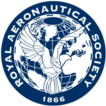Added on 22 March 2010 by Royal Aeronautical Society
In April 2008 the European Aviation Safety Agency (EASA), an executive agency of the European Commission, became responsible for the Licensing and Medical Standards of pilots in Europe.
The advent of a pan-European legislative structure for the regulation of aviation medical assessments in Europe is an exciting and challenging prospect. The objective of improving flight safety for the citizens of Europe by the harmonisation of medical standards is laudable and well supported.
Tags: Stewart Lecture
Added on 19 March 2010 by Royal Aeronautical Society
The Royal Aeronautical Society, in association with iPER Media are proud to announce the launch of the IMPROVED Aero Society Channel!
Tags: aero society channel, news releases
Added on 16 March 2010 by Royal Aeronautical Society
Protection and Enhancement of the Senses in Flight
The early days of aviation soon proved that whilst the human body’s special senses were critical to the safe operation of aircraft, “flying by the seat of the pants” was a recipe for disaster. Since then, considerable expertise has been developed in the interpretation of sensory input needed for safe aircraft operation. For example, vision supplies over 80% of the information required to fly an aircraft, and the quality of an aviator’s eyesight is a key issue. New developments in laser eye surgery and new understanding about the role of oxygen in vision have the potential to improve visual performance to levels that are above normal.
Tags: conferences
Added on 07 March 2010 by Royal Aeronautical Society
The Royal Aeronautical Society is pleased to be holding it’s second Aerospace Book Fair.
This is a great opportunity to browse through and purchase a wide selection of aviation and aerospace literature; and for our members to meet old friends and make new ones.
Tags: aerospace book fair, society events
Added on 03 March 2010 by Royal Aeronautical Society
After false starts — Boeing’s flight test campaign for the 787 is now underway, ahead of the first delivery of the Dreamliner later this year. TIM ROBINSON profiles the testing activity for the 787 and speaks to Randy Tinseth, vice president marketing, Boeing Commerical Airplanes, on the programme’s future.
This is an excerpt from an article published in Aerospace International: March 2010
On 15 December 2009 on a cold and misty Seattle morning, the prototype Boeing 787 Dreamliner, the first all new airliner of the 21st century made its maiden flight, watched by Boeing employees, the world’s media and also by thousands around the globe logged in online through the Internet. The three-hour flight from the 787 factory at Everett’s Paine Field saw the two pilots, chief test pilot Mike Carriker and engineering test pilot Randy Neville thread ZA001 round foggy weather to finally land at the flight test centre at Boeing Field. With the visibility closing in and a requirement for safety reasons to take off to the north, (where it is more sparsely populated) it had been touch and go on the day but, luckily, a weather window appeared and history was made.
Tags: Boeing, Boeing 787 Dreamliner, From the Aerospace International
Added on 03 March 2010 by Royal Aeronautical Society
Regina Peldszus,
doctoral researcher in spacecraft habitability, Kingston University, London
This is an excerpt from an article published in The Aerospace Professional: March 2010
Out of this World: The New Field of Space Architecture — this is the title of the discipline’s seminal book, published last autumn by the AIAA and its technical committee on space architecture. The dialogue of aerospace and architecture/ industrial design is beginning to flourish, and concepts and ventures are increasingly making news in both design and aerospace media. Not so new a field, however: Especially in the US and Russia, architects have been involved in space programmes from the beginning. To ‘humanise’ Skylab, NASA enlisted the office of industrial designer Raymund Loewy, while on the Soviet side, architect Galina Balashova had already been working on interior programming for space station concepts.
Tags: From The Aerospace Professional, Space Architecture






